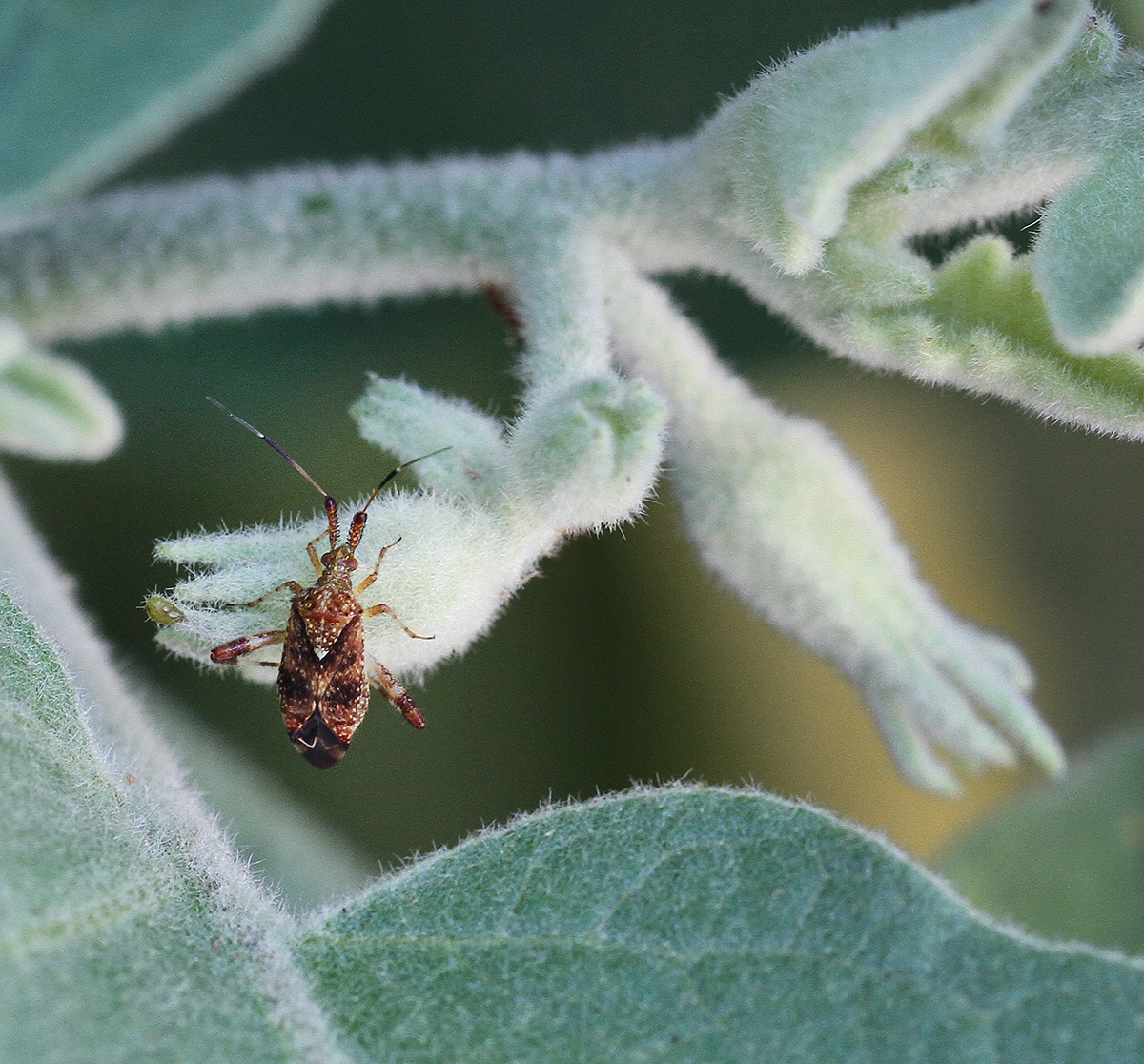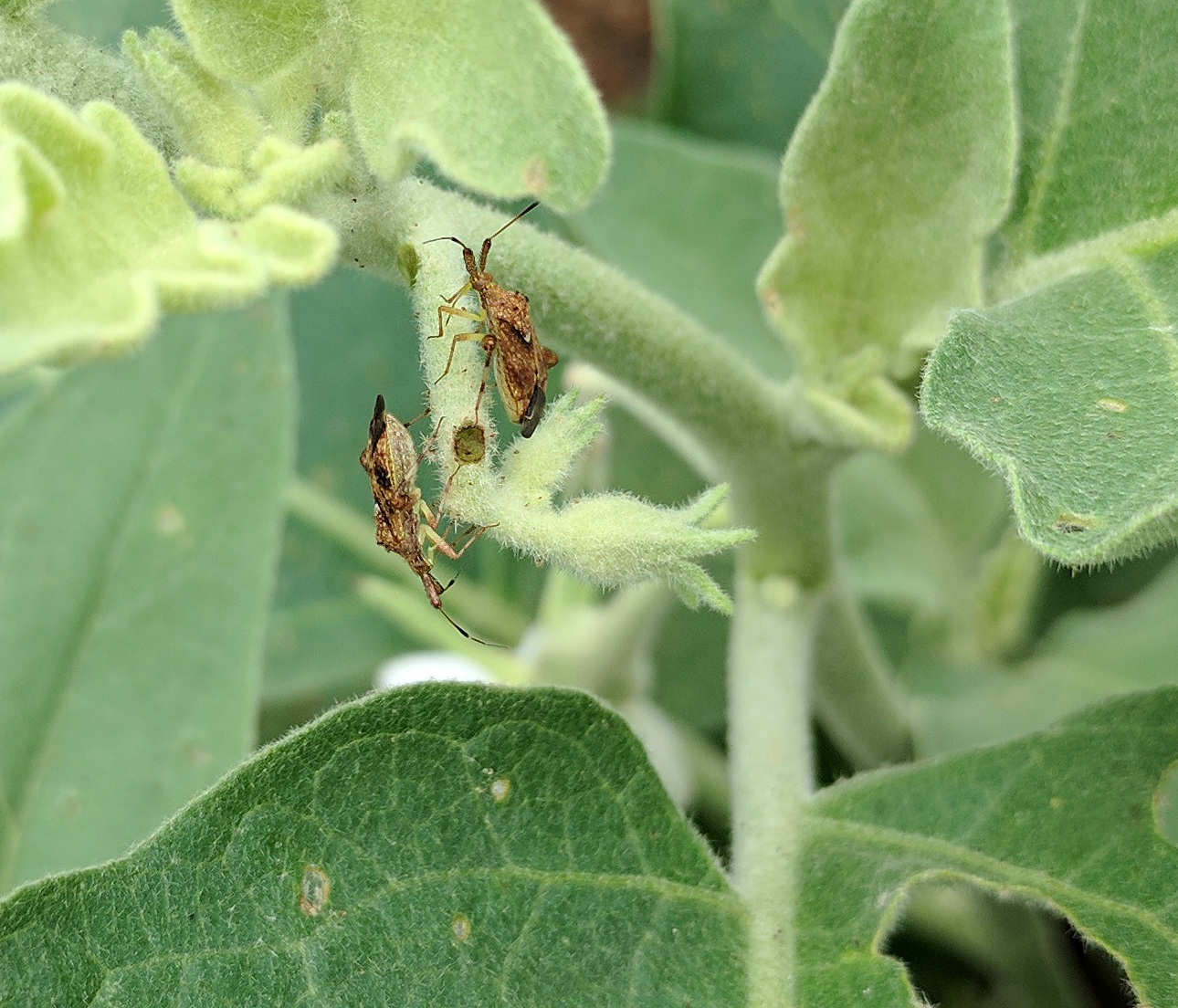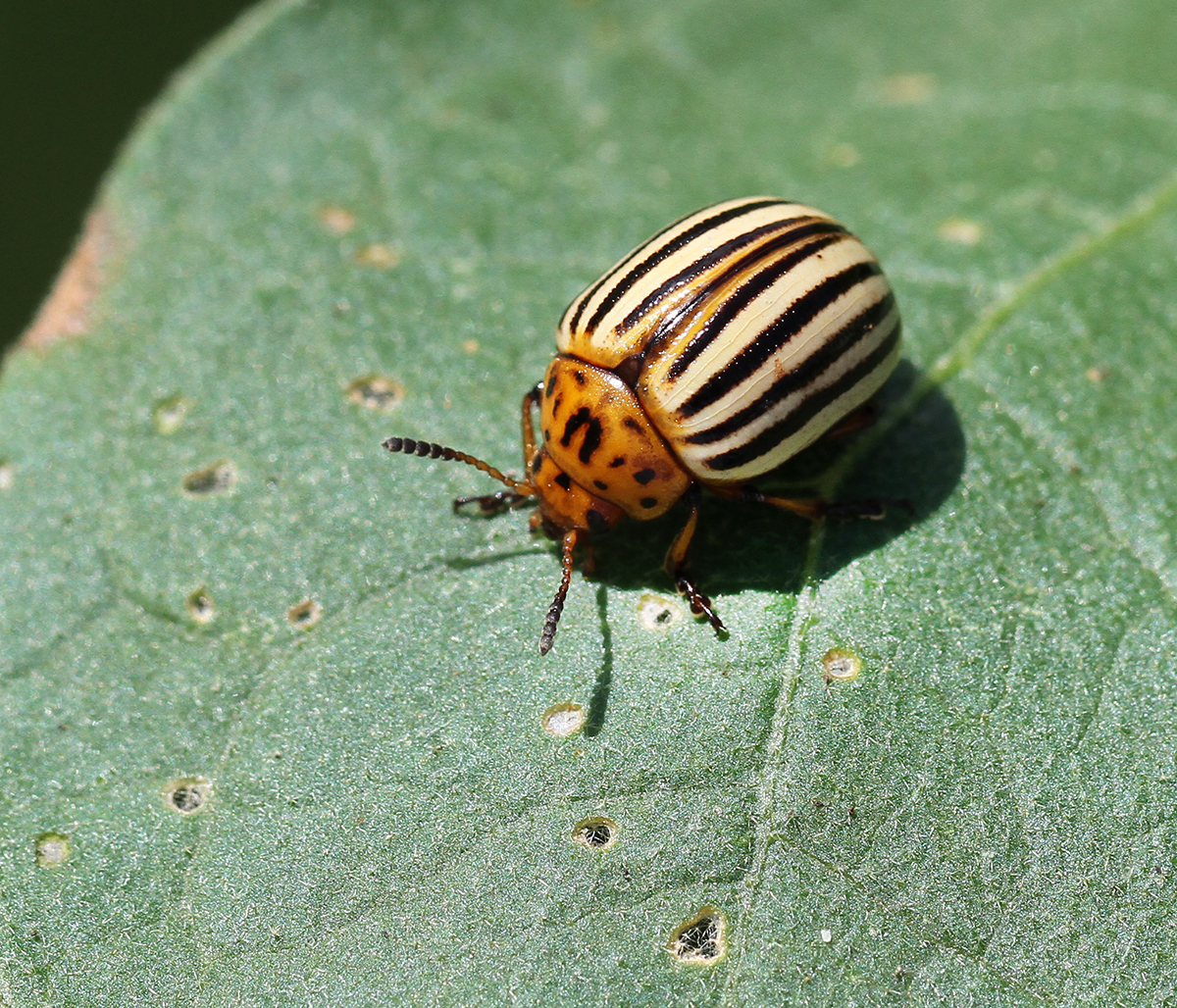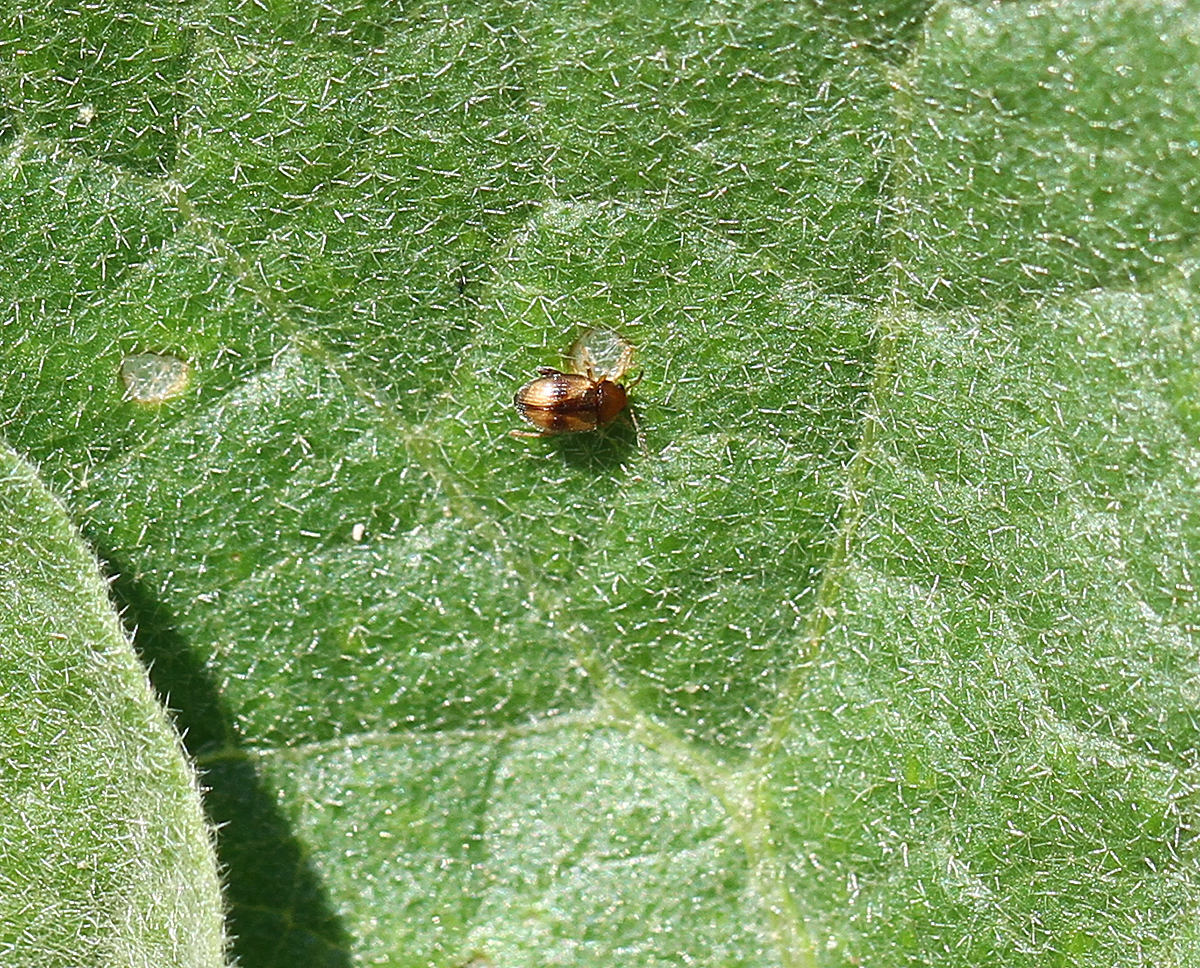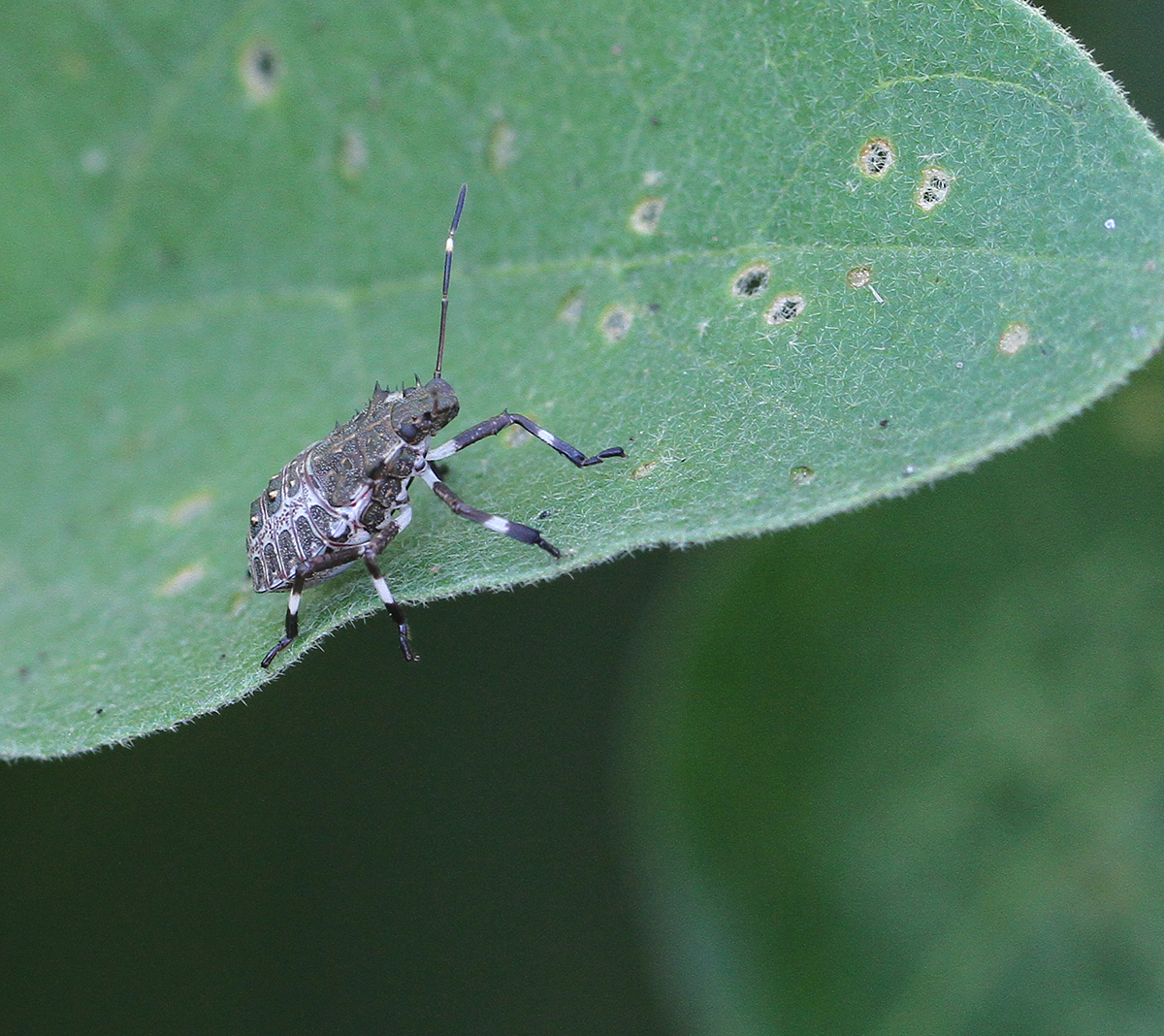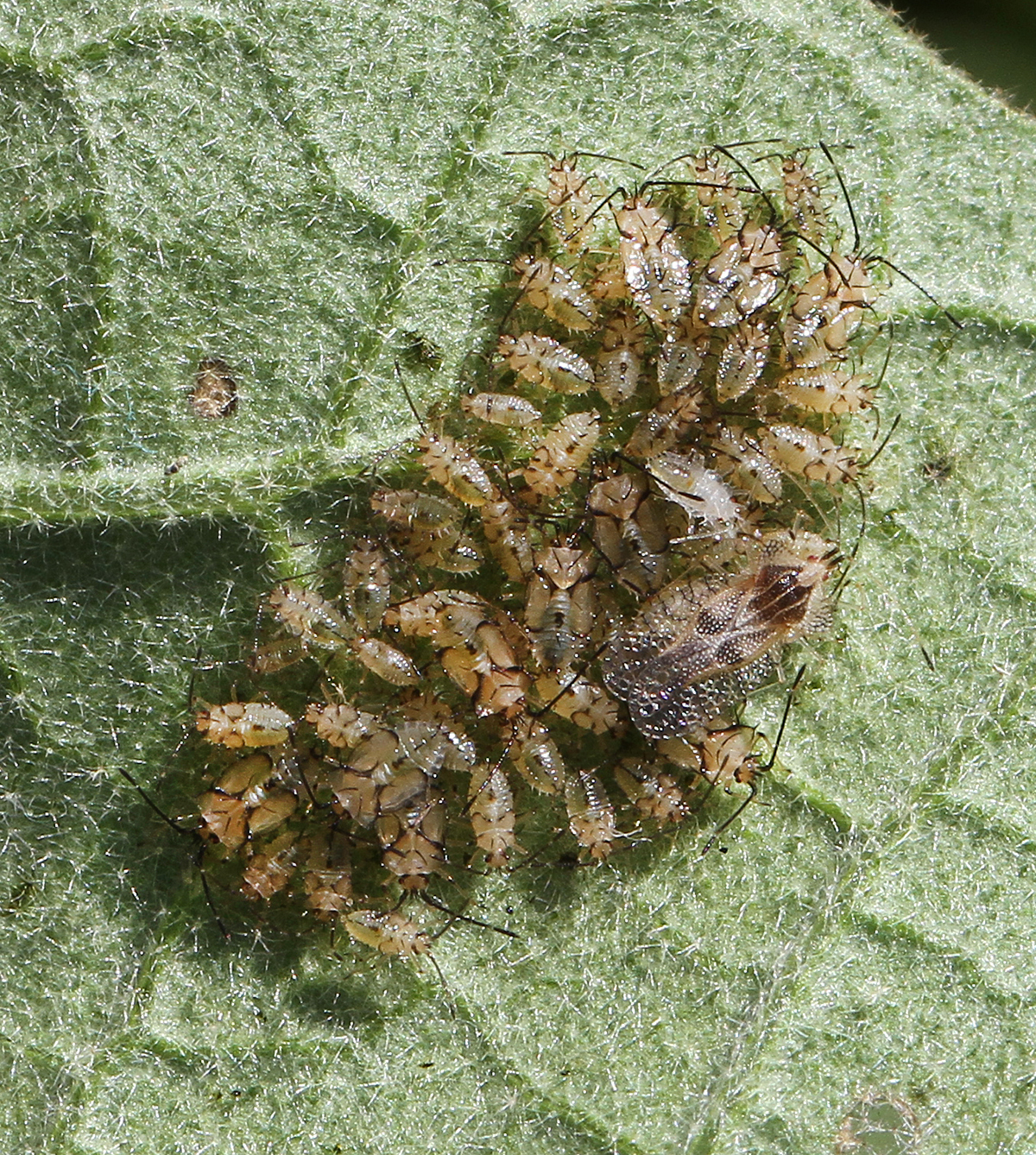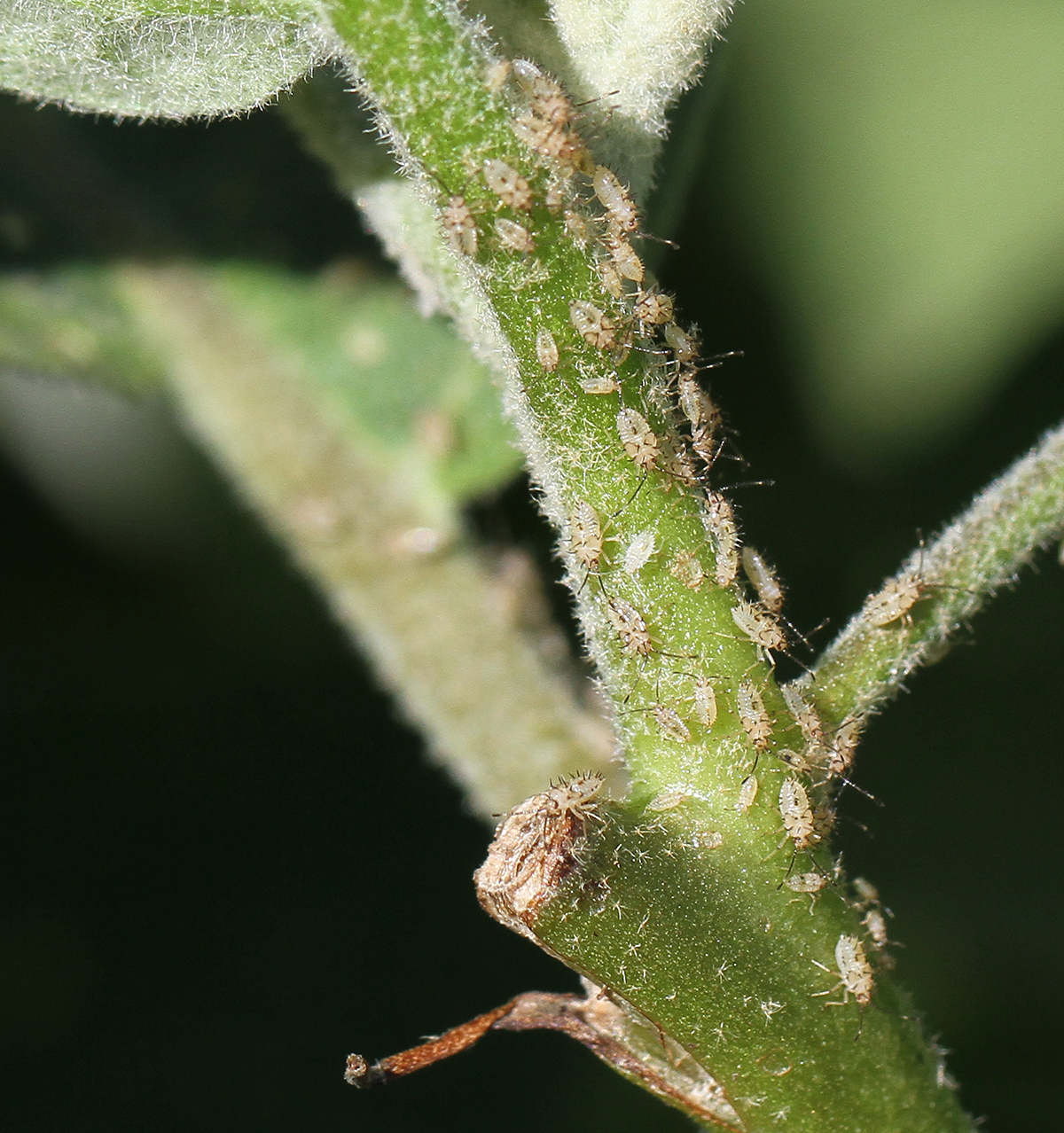Incredible Diversity of Critters on Eggplant Crop
go.ncsu.edu/readext?498440
en Español / em Português
El inglés es el idioma de control de esta página. En la medida en que haya algún conflicto entre la traducción al inglés y la traducción, el inglés prevalece.
Al hacer clic en el enlace de traducción se activa un servicio de traducción gratuito para convertir la página al español. Al igual que con cualquier traducción por Internet, la conversión no es sensible al contexto y puede que no traduzca el texto en su significado original. NC State Extension no garantiza la exactitud del texto traducido. Por favor, tenga en cuenta que algunas aplicaciones y/o servicios pueden no funcionar como se espera cuando se traducen.
Português
Inglês é o idioma de controle desta página. Na medida que haja algum conflito entre o texto original em Inglês e a tradução, o Inglês prevalece.
Ao clicar no link de tradução, um serviço gratuito de tradução será ativado para converter a página para o Português. Como em qualquer tradução pela internet, a conversão não é sensivel ao contexto e pode não ocorrer a tradução para o significado orginal. O serviço de Extensão da Carolina do Norte (NC State Extension) não garante a exatidão do texto traduzido. Por favor, observe que algumas funções ou serviços podem não funcionar como esperado após a tradução.
English
English is the controlling language of this page. To the extent there is any conflict between the English text and the translation, English controls.
Clicking on the translation link activates a free translation service to convert the page to Spanish. As with any Internet translation, the conversion is not context-sensitive and may not translate the text to its original meaning. NC State Extension does not guarantee the accuracy of the translated text. Please note that some applications and/or services may not function as expected when translated.
Collapse ▲One of my duties as an Agriculture Agent for North Carolina Cooperative Extension is to help farmers when they are having crop problems. I was contacted by Screech Owl Greenhouses in mid-August because they were having problems with eggplant fruit abscission. The tiny new fruits were dropping off the plant before they could develop any size. When I arrived it did not take me long to notice small punctures on the pedicel that bore the fruit so I knew it was some type of insect. It wasn’t until my second visit that I found the culprit, an insect I had never encountered: a clouded plant bug (Neuroculpus nubilus). These bugs insert their mouthparts along the pedicel and feed on plant juices which causes the fruit to drop off. I provided recommendations on how to control this pest.
While I was scouting the eggplant crop, I was impressed by the diversity of insects and other arthropods I saw. Grower Screech Sweger uses only organically approved pesticides (and only those as a last resort), so he had a wide variety of plant-feeding insects as well as beneficial insects. I visited the farm a few more times between mid-August and mid-October and recorded 39 different species, including 22 plant-feeders and 17 pollinators and predators. This by no means represents all the insects to be found on eggplant but I thought folks would be interested in seeing the incredible biodiversity to be found in the plant canopy!
I have posted photos I took of all the critters. Keep in mind that some plant-feeding insects are infrequent visitors and don’t develop large populations and so don’t typically cause significant damage. I have noted this in the photo caption.
Note: there are too many photos to post on one page without bogging down the system so make sure and visit all three pages!
Plant-Feeding Insects
Click on each photo to enlarge
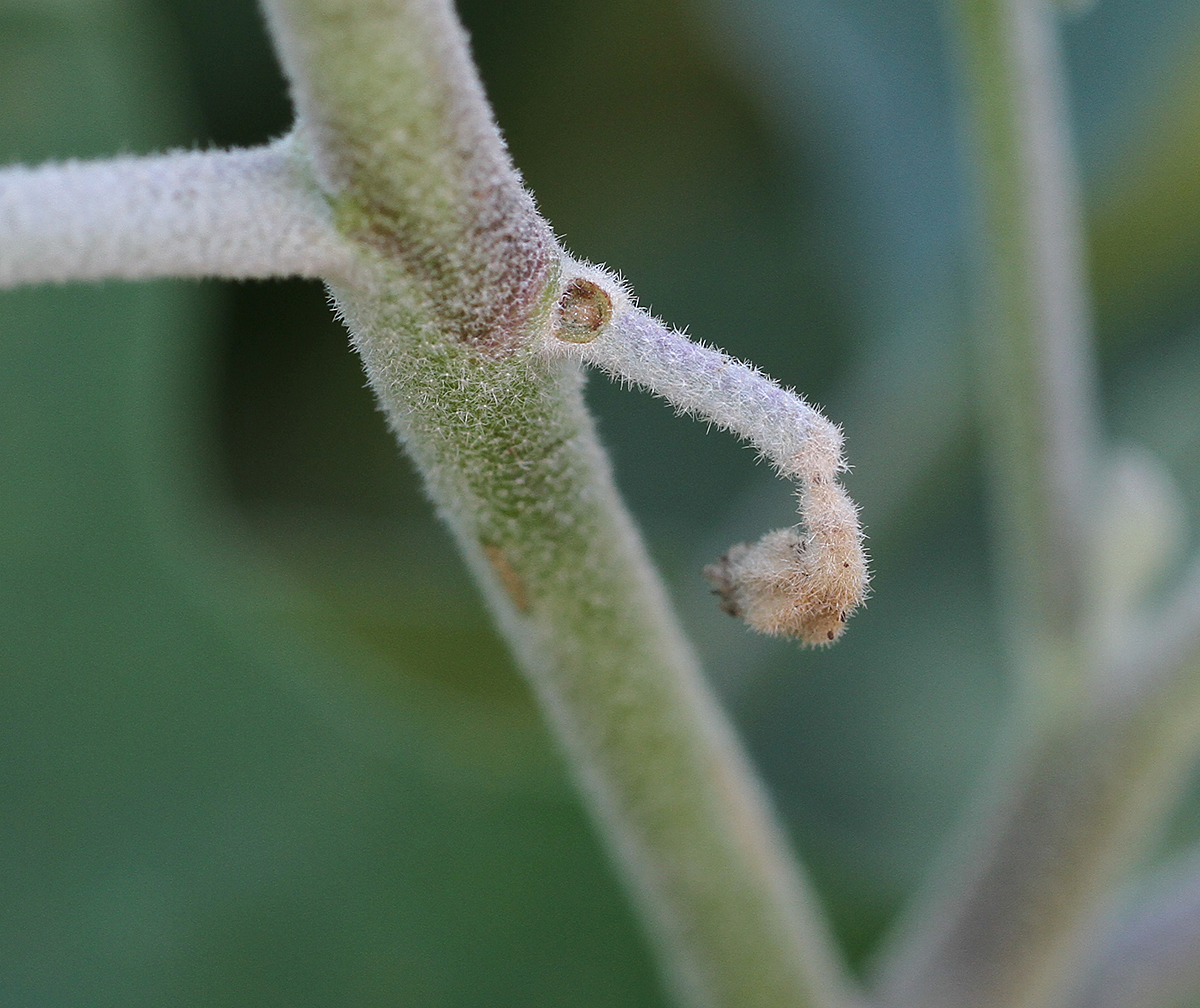
Telltale punctures on the pedicel told me that an insect was likely the cause of the abscission of the small fruit. Photo by Debbie Roos.

Colorado potato beetle larva. Both adults and larvae chew holes in the leaves and can cause significant damage. Photo by Debbie Roos.
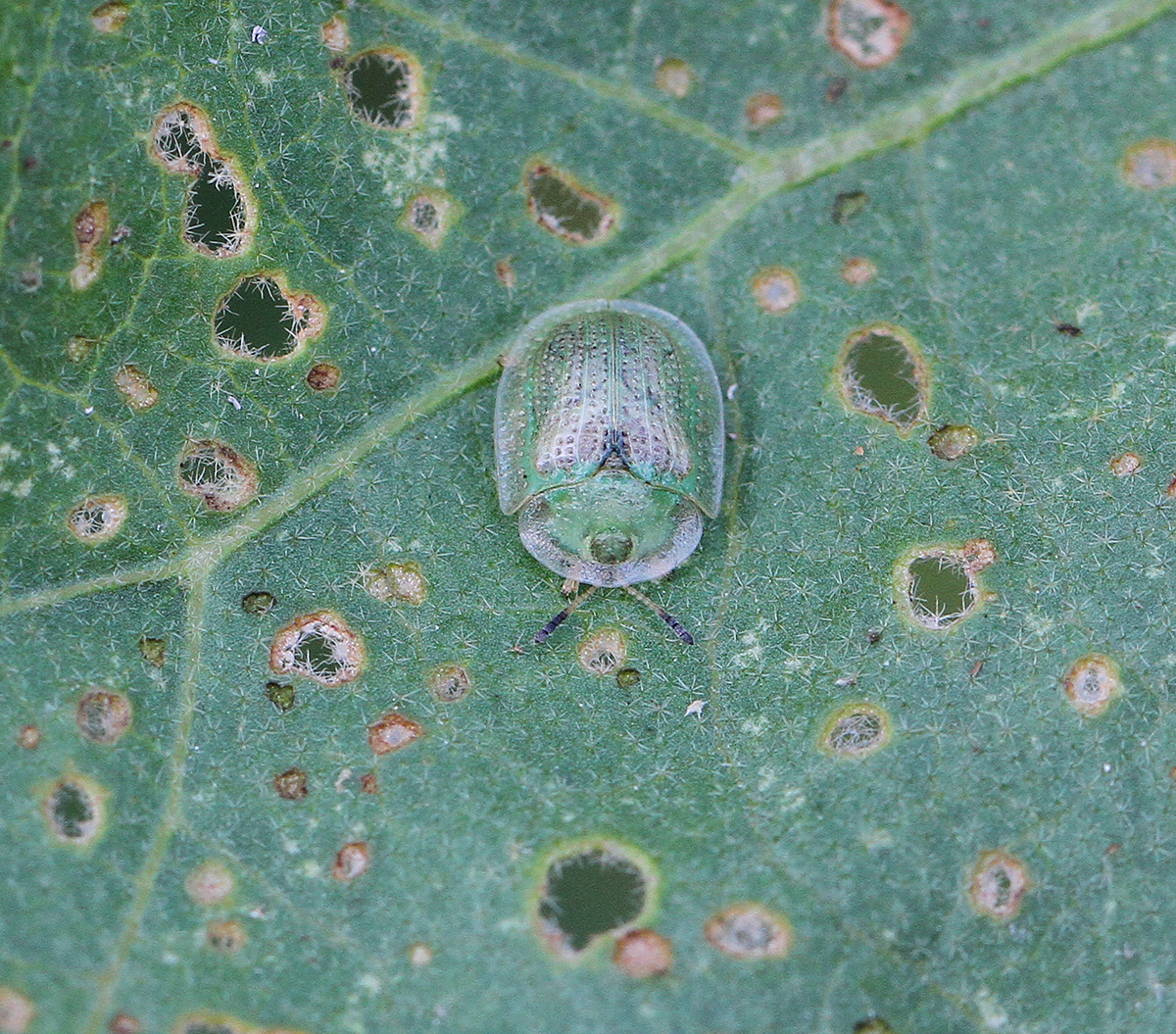
Eggplant tortoise beetle (Gratiana pallidula). This is a chewing insect and is usually not a significant pest. Photo by Debbie Roos.
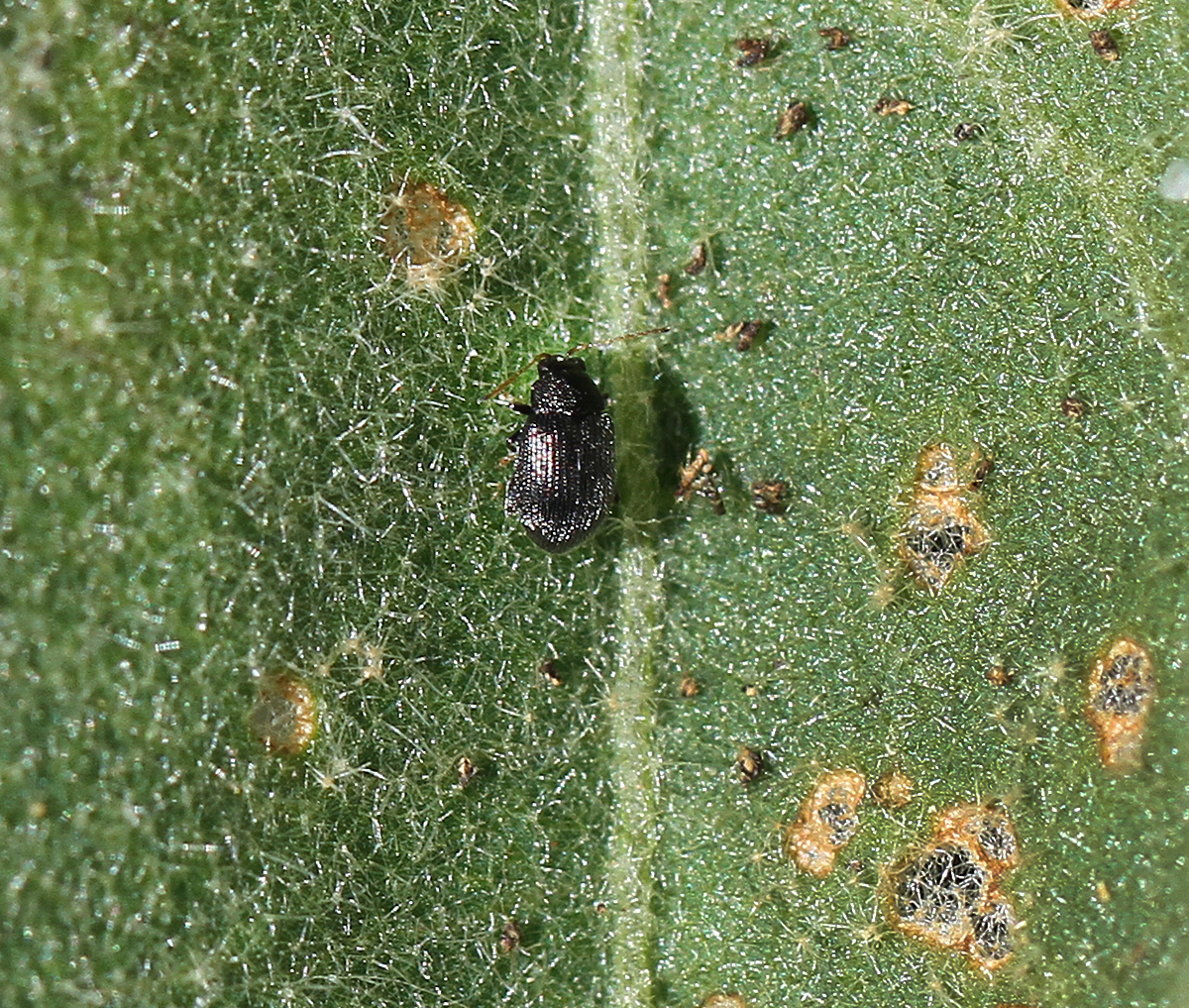
Eggplant flea beetle (Epitrix fuscula). Flea beetles chew tiny holes in the leaves, leaving a characteristic “shot-hole” appearance. Photo by Debbie Roos.

Sharpshooter leafhopper (Graphocephala versuta). Not a significant eggplant pest. Photo by Debbie Roos.

Harlequin bug (Murgantia histrionica) eggs. Harlequin bugs feed primarily on brassicas but in their absence will feed on other crops. Not a significant eggplant pest. Photo by Debbie Roos.
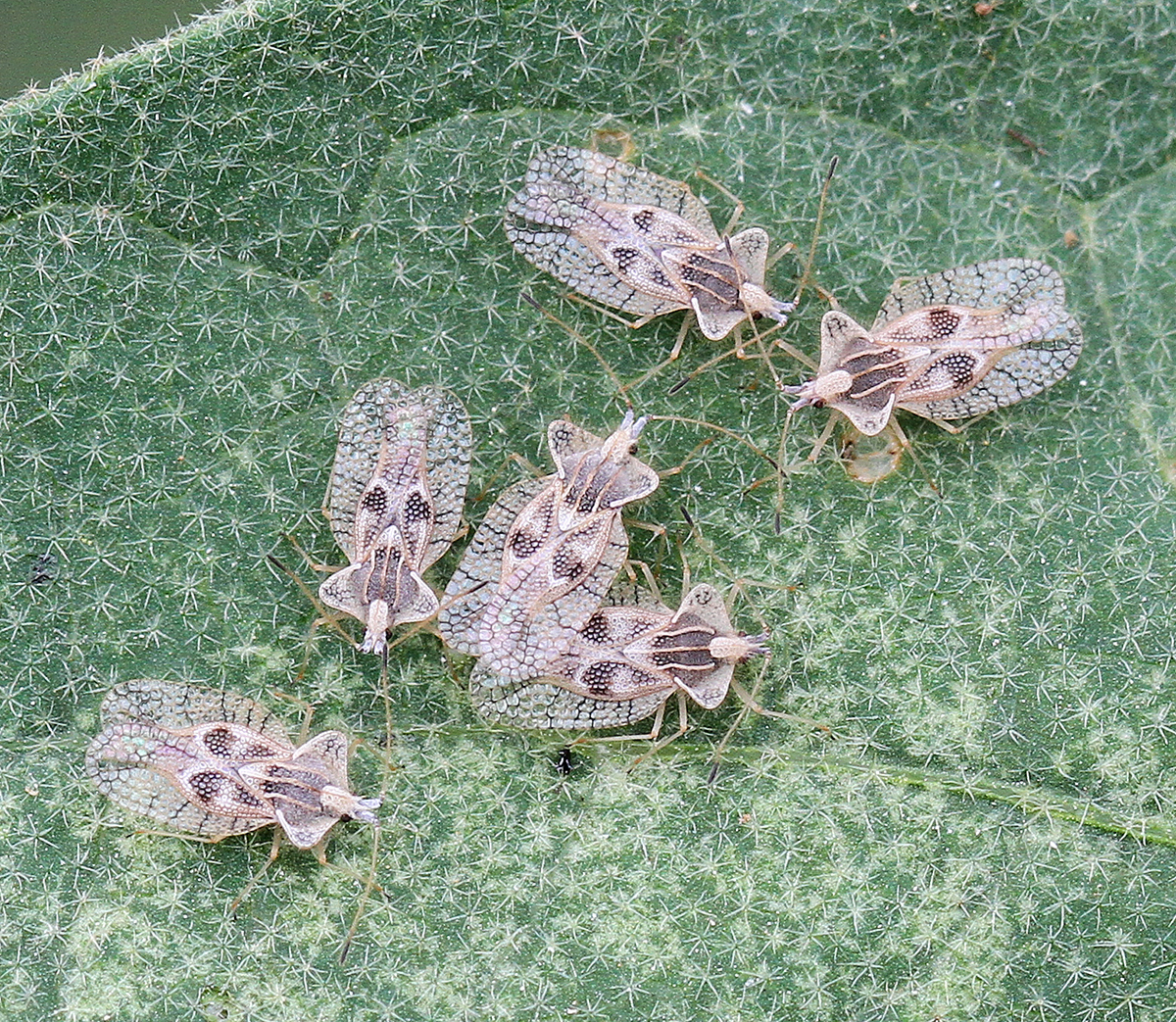
Eggplant lace bug (Gargaphia solani) adults. Lace bugs are sucking insects and can develop large populations. Photo by Debbie Roos.



